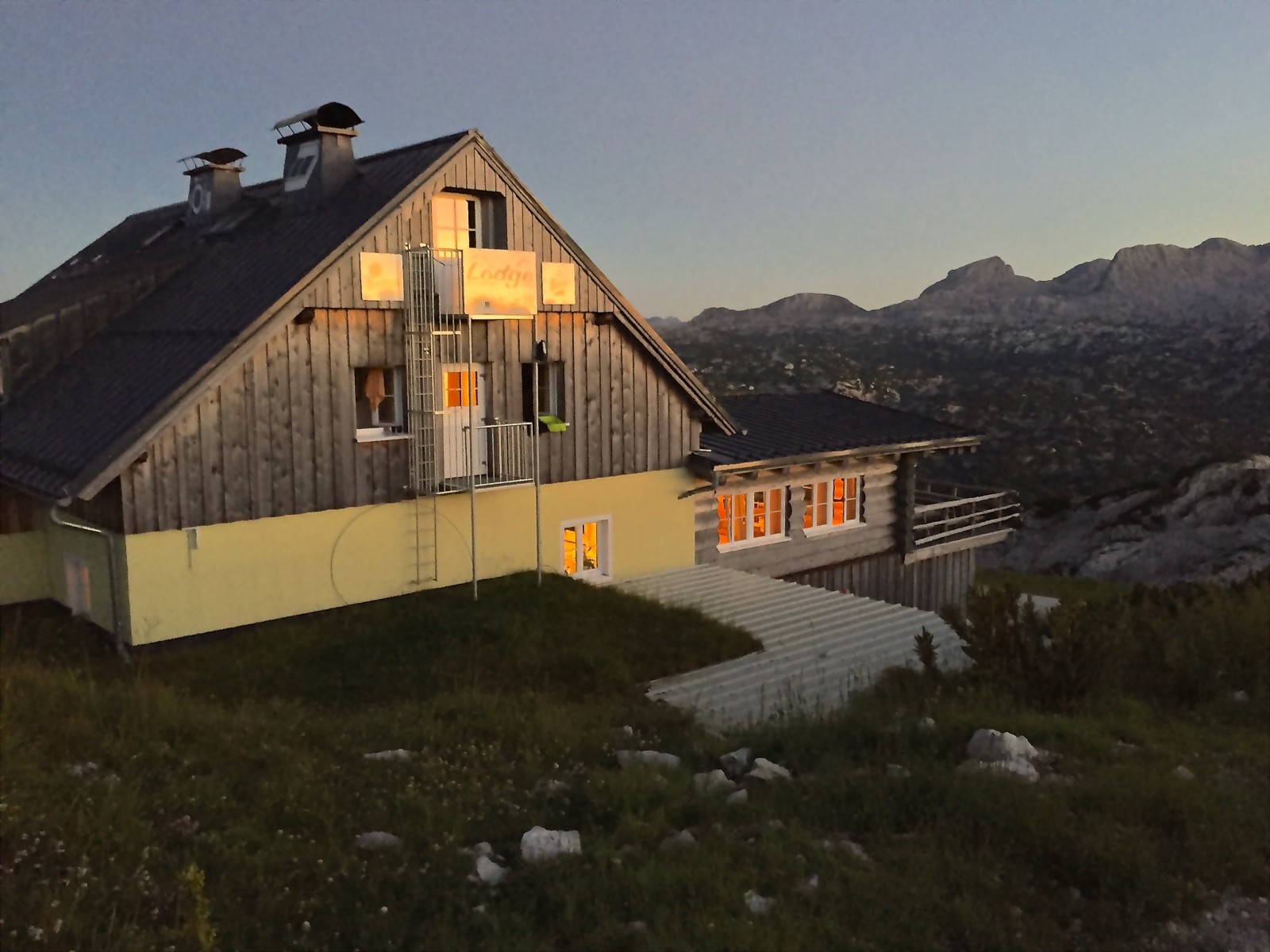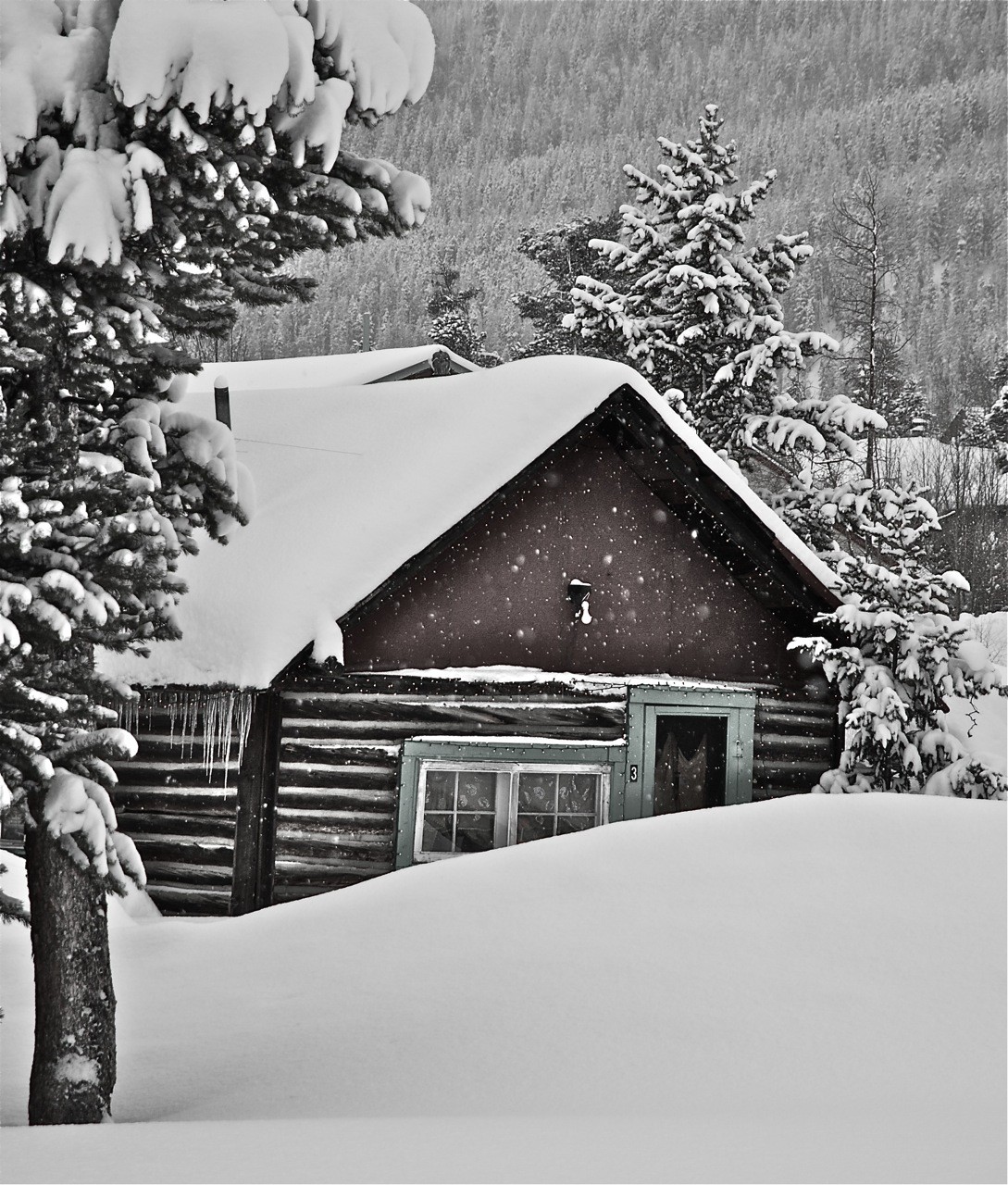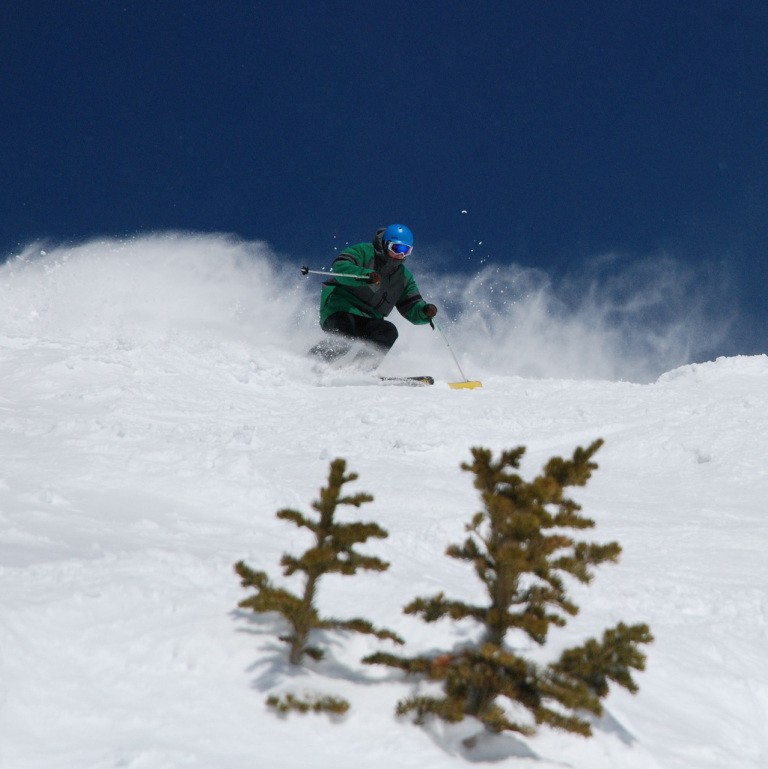Winter sports enthusiasts can help lower emissions—if they’re smart about how they hit the slopes.
By Bob Berwyn
Moonset over Dillon, Colorado, a mountain resort that depends on skiers in the winter and boaters in the summer. As global warming shifts the snow season, it affects both summer and winter recreation. During the early 2000s, this part of the Rocky Mountains, 70 miles west of Denver, was near the heart of a multi-million-acre forest die-off caused by bark beetles reproducing in turbo overdrive in response to a warming climate. The town is starting to take steps in recognizing the climate challenges ahead, but there is much more it could do to reach the goals of the Paris climate agreement. (Photo: Bob Berwyn)
Connecting the dots on climate change isn’t that hard anymore. There are hundreds of studies that all say nearly the same thing: The world as we know it faces irrevocable change unless we stop pumping heat-trapping greenhouse gases into the air by 2050. Those changes will include decade-long droughts across parts of the American West, shorter winters, and less snow in many mountain ranges all around the world. We’re already seeing the changes now.
So I spent a few days in a deep funk after the election, knowing that, if the new president makes good on his threats to dismantle established global climate policy, it means my son probably won’t have the chance to ski his way through life like I did. In big part, it’s the memories of all the joyful powder turns Dylan and I shared over the past 16 years that spurred me to think about how to decarbonize skiing so that we’re part of the solution, not the problem.
After graduating from Summit High in Colorado last June, Dylan is taking a year to focus on skiing, but he and his friends have already felt the sting of global warming. Along with the rest of the world, Summit County was near-record warm and dry through late November — too warm for snowmaking. Ski area openings were delayed, ski town jobs on hold, and some resort workers relied on dwindling food banks for meals.
Climate change is a global issue, and skiers are part of a global community that transcends national borders. What we’ve learned from the election is that we probably can’t count on the government to save us. We need to join hands with other people hurt by climate change, and who suffer social and environmental injustice: Native Americans, people of color, the LGBQT community, and so many more. We need solidarity because we have to tackle global warming ourselves.
Here’s what we can do.
We can make personal choices to lower our individual carbon footprints by the amount spelled out by the Paris Agreement; 50 percent by 2030 and 95 percent by 2050. That’s tough, but not impossible — and, remember, the agreement was endorsed by the winter sport community last December at the COP21 global climate summit.
“Know that the full force of winter is behind you,” skiers and snowboarders wrote in a letter to President Barack Obama ahead of the Paris conference, urging strong action on climate change.
It’s time to own those words and turn them into action.
It may seem daunting to tackle this on a grassroots level, but it wasn’t as though the government was ever going to turn off all the coal smokestacks and conjure up a forest of carbon-sucking truffula trees overnight. It was always going to take a lot of hard work and grassroots activism to make the needed changes. The Paris deal was a beginning, not a happy end. Implementing it has always meant making dramatic changes to our way of life: how we heat our homes, drive our cars, and power our ski lifts and run the hotels we stay in.
Except now, there probably aren’t going to be any new regulations mandating greater fuel efficiency, limiting power plant emissions, or requiring sustainable building. And if the president-elect pulls out of the deal (or simply declines to meet the commitments hammered out in Paris), our compatriots around the globe are not going to be happy with our carbon-emitting, snow-killing ways. Do we want to rely on the rest of the world to bail us out by cutting their emissions to compensate for a lack of action in the United States? If so, we can count on paying a hefty carbon tax on a plane ticket to Switzerland, provided there’s any snow left in the Alps.

The Lodge at Krippenstein, in the Alps near Salzburg, Austria, operates fully on renewable energy and has been certified as a sustainable lodge by the regional government. All aspects of mountains sports and tourism must be carbon-neutral by 2050 to meet the goals of the Paris climate agreement. (Photo: Bob Berwyn)
When skiing (and doing other things), we need to carpool more, and eat less beef. Every quarter-pound burger equals about 7.5 pounds of CO2. If every one of the 54 million skiers in the U.S. last year ate one burger it would add up to 198,000 tons of methane and CO2—so there’s potential to cut. There are plenty of greenhouse gas calculators out there, showing the carbon cost of most common activities and products. Maybe we could create an application that would help skiers track their own footprint — what’s the carbon cost of riding Chair 23 at Mammoth for a day? The point is, we have to know not just the abstract, millions of tons of annual emissions statistic, but what our individual carbon footprint is before we can cut it.
Since there’s not going to be a carbon tax in the U.S. any time soon, here’s a radical idea: We could tax ourselves for carbon as a community of skiers, making sure that we’re taking responsibility for our own carbon footprint.
Carbon is already bought and sold by the ton on several markets around the world, so it’s easy to pay into a climate compensation fund for lowering CO2 levels around ski slopes — even better if those investments flow to locally owned renewable energy projects.
Better still would be a network of local, state, and regional carbon banks and markets. In mountain regions, the ski and tourism industry could work with local banks and governments to play a leading role in establishing those financial mechanisms. That would give mountain towns the chance to invest in local renewable energy products, and our local governments could help provide power grid infrastructure.

Winter sports and snow are a big part of the cultural fabric in Frisco, Colorado, where ski tourism helps fund the preservation of historic mining cabins. The town is taking small steps to address climate sustainability, and would be hurt by President-elect Trump’s moves to abandon greenhouse gas reduction goals. (Photo: Bob Berwyn)
We need to fly less, until we figure out ways to do it without spewing yet more heat-trapping pollution. If you have to fly, look for the most fuel-efficient airline, as ranked by the International Council on Clean Transportation. We can also choose to tax ourselves for flying. An online carbon calculator shows it costs $2.95 to pay for the 0.38 tons of CO2 from an East Coast to Denver roundtrip.
Do you know what your favorite ski area’s carbon footprint is? I’ve mostly skied at Arapahoe Basin the past 20 years, a mid-sized resort about 70 miles west of Denver that generates 3,633 metric tons of CO2 equivalent greenhouse gases each year, and has committed to cutting its carbon footprint 3 percent by 2020 (from 2008–09 levels). That’s not all that much, so I’ll encourage the resort’s managers to step up their ambition, in line with the Paris climate goals. Alta, a slightly bigger ski area in Utah, is aiming to cut its emissions by 20 percent in the same timespan.
But every ski area’s carbon footprint needs to shrink to near zero by 2050 to meet the climate deal we backed, and since Donald Trump probably won’t give free sets of solar panels and wind turbines to every ski resort in the land, we need to figure out how to make the needed cuts happen another way. When I go skiing this winter, I’ll stay at a certified climate-friendly lodge that gets all its power from renewable energy sources.
Ski resorts, with their lodges, snowmaking, and ski lifts are energy hogs and must push hard for a decarbonization of the larger energy economy to meet the world’s climate targets. But we also have to take into account the climate impacts of other parts of the industry, including the personal consumer decisions we make. Start by choosing skis and snowboards from climate-aware companies like Grown, which lists the carbon footprint of all its products and has tried to reduce the use of carbon-intensive materials. An average pair of skis from the company has a carbon footprint of 16.4 kilograms.
What about the carbon cost of heli-skiing and the ski film industry? Hundreds of helicopters fly thousands of miles each winter to deliver a few thousand people to distant powdery peaks. Those choppers burn 45 gallons of fuel per hour; each gallon burned produces about 22 pounds of carbon, so switching to biofuels would drastically help shrink the climate footprint of this elite activity.
One of the most vexing questions of the ski industry climate equation is transportation. By 2050, we have to decarbonize the streams of tens of thousands of cars heading from Los Angeles to Mammoth and Denver to Breckenridge each weekend by using electric vehicles and mass transit powered by renewable energy.
Many businesses and industries say climate action helps their bottom line and support momentum toward a low-carbon economy, as shown by the American Business Act on Climate pledge, signed by 154 companies worth more than $7 trillion. Some of those companies say they’ll cut emissions by 50 percent and purchase only renewable energy by mid-century.
At a special event during last month’s COP22 climate conference in Marrakech, corporate executives from around the world said they see a clear business case for climate-friendly policies. Some companies like Mars, Inc. have said they are striving to eliminate greenhouse gas emissions by 2040. Working toward energy efficiency helps companies cut costs and motivates employees who are working toward a higher purpose, the business community said during the session.
With so much at stake, the ski industry should be at the very forefront of this movement, and we, its customers, need to help shift the paradigm. Let’s make sure the ski industry is accountable and fully transparent when it comes to reducing greenhouse gas emissions. There’s already a great framework in place for this with the National Ski Areas Association Sustainable Slopes charter, which is maturing into a legitimate tool for reducing greenhouse gas pollution. In an annual climate challenge, resorts show their carbon footprint and what steps they’re taking to shrink it.

Dylan Berwyn carves fresh powder snow at Arapahoe Basin Ski Area in Summit County, Colorado. (Photo: Bob Berwyn)
The voluntary climate challenge goes much further than many other industries in getting specific about greenhouse gas reduction targets. And, even if the goals fall short of meeting the goals of the Paris deal, the effort shows how grassroots, community, and business choices can shape climate action.
Skiers can also take action on climate change by participating in the public environmental processes for ski resorts on public lands, which includes nearly all large Western resorts. All those resorts need operating permits from the U.S. Forest Service. Those permits are subject to environmental reviews that include public input.
Skiers can use that process to insist on their legal right to a safe environment. We can call on the Forest Service and the resort industry to live up to the goals of the Paris climate deal. And we can ask that any permits issued include the targeted carbon reductions as a condition of operations.
That last bit might sound wonky, but, as a ski town reporter for 19 years, I know that local planning decisions are where the political rubber hits the road, and it’s the level where grassroots input is most effective — but it only works if people really get involved and take individual action. Which is what we all need to do in the coming years absent meaningful leadership at the federal level.
I’ve been a skier longer than I’ve been a reporter; skiing taught me to respect nature and also brought me to writing. So, along with trying to reduce my own carbon footprint by 50 percent, I’m more committed than ever to raising awareness about the impacts of global warming—especially on behalf of Dylan, whom I raised to be a skier. To my fellow snow-lovers across the globe: It’s time to unite and make a difference.





